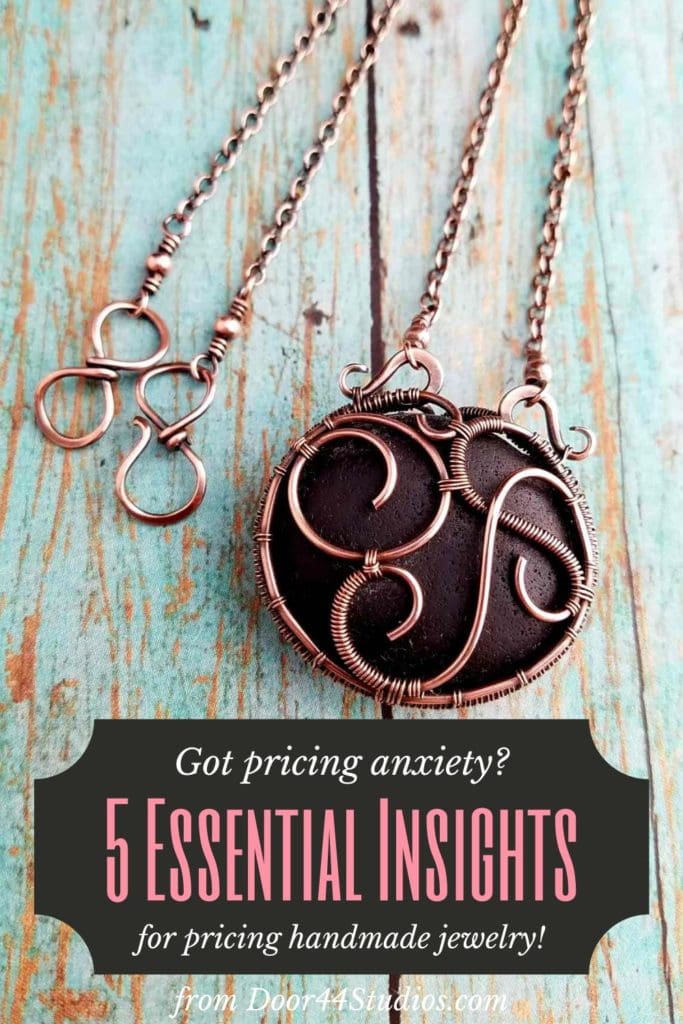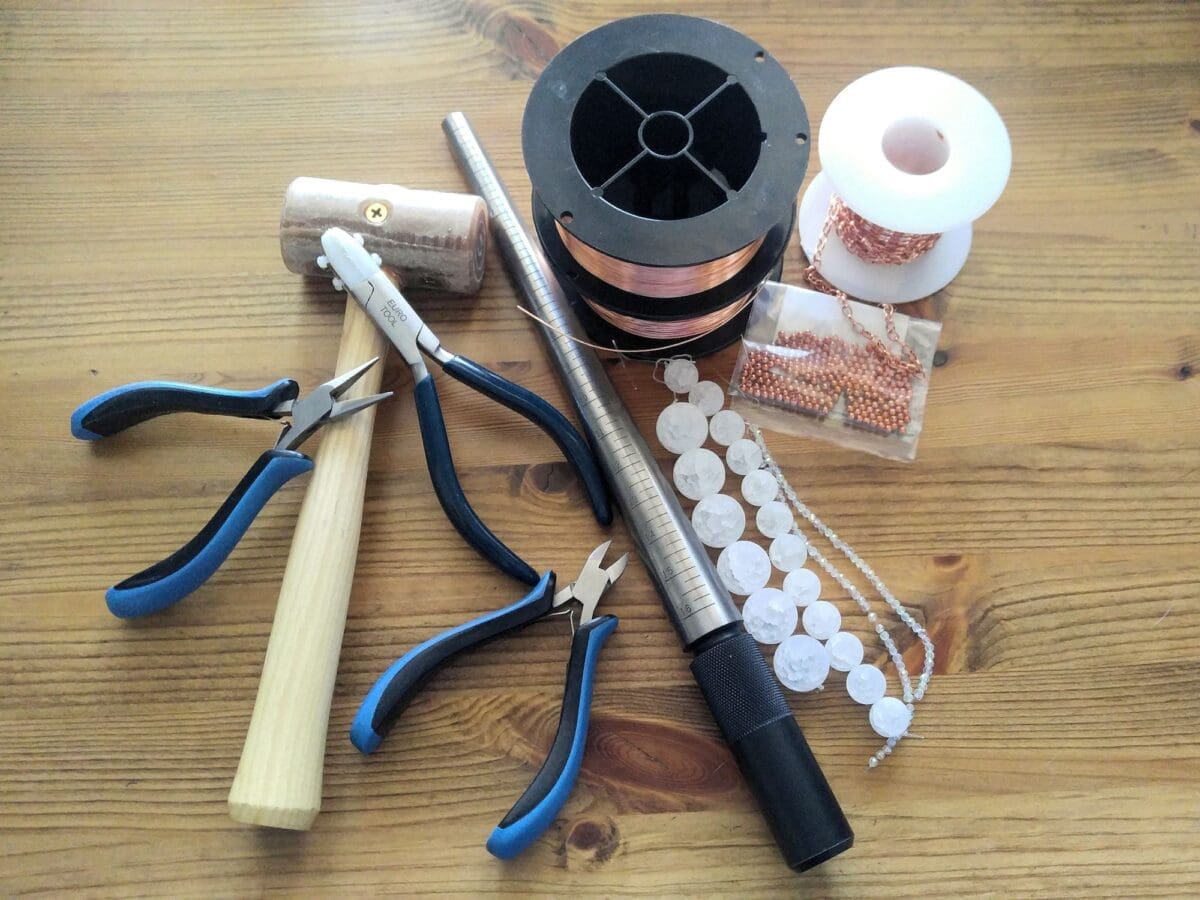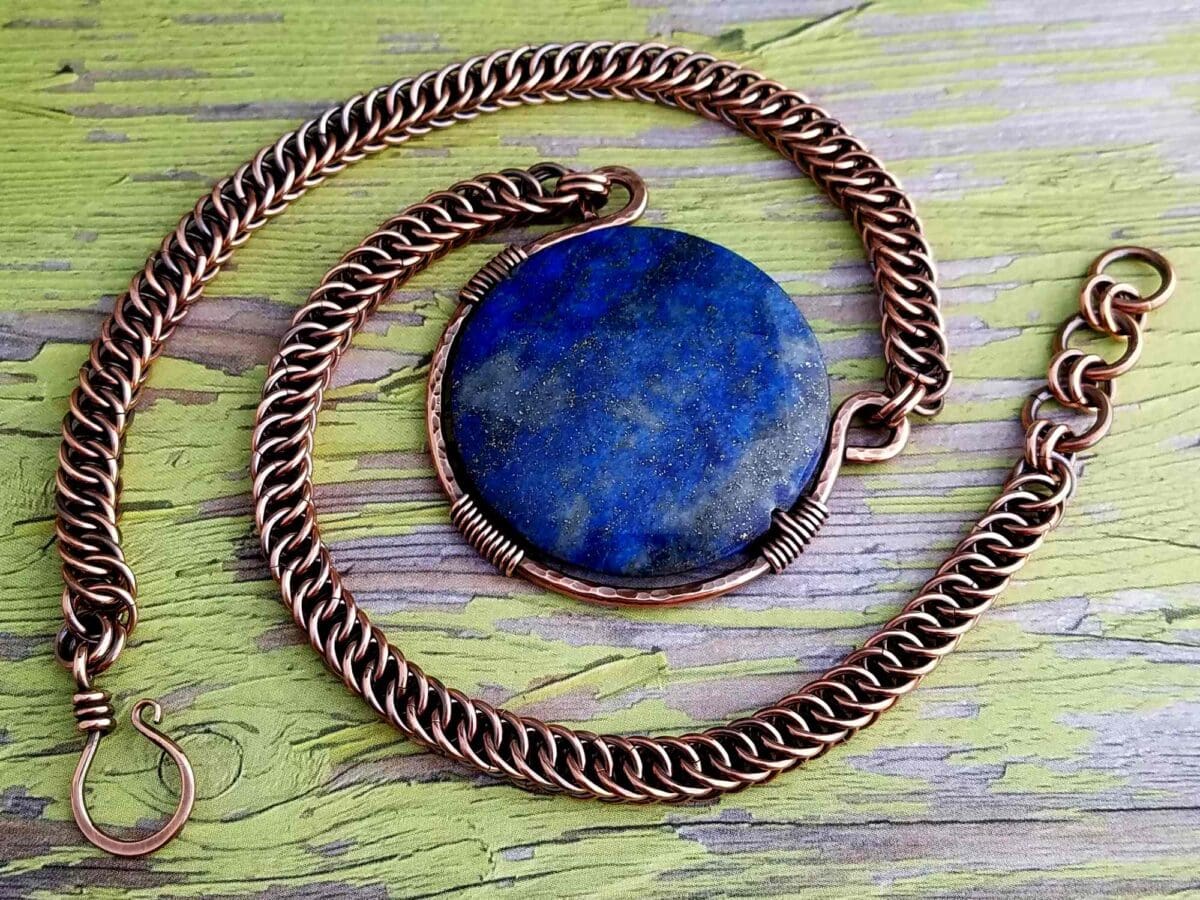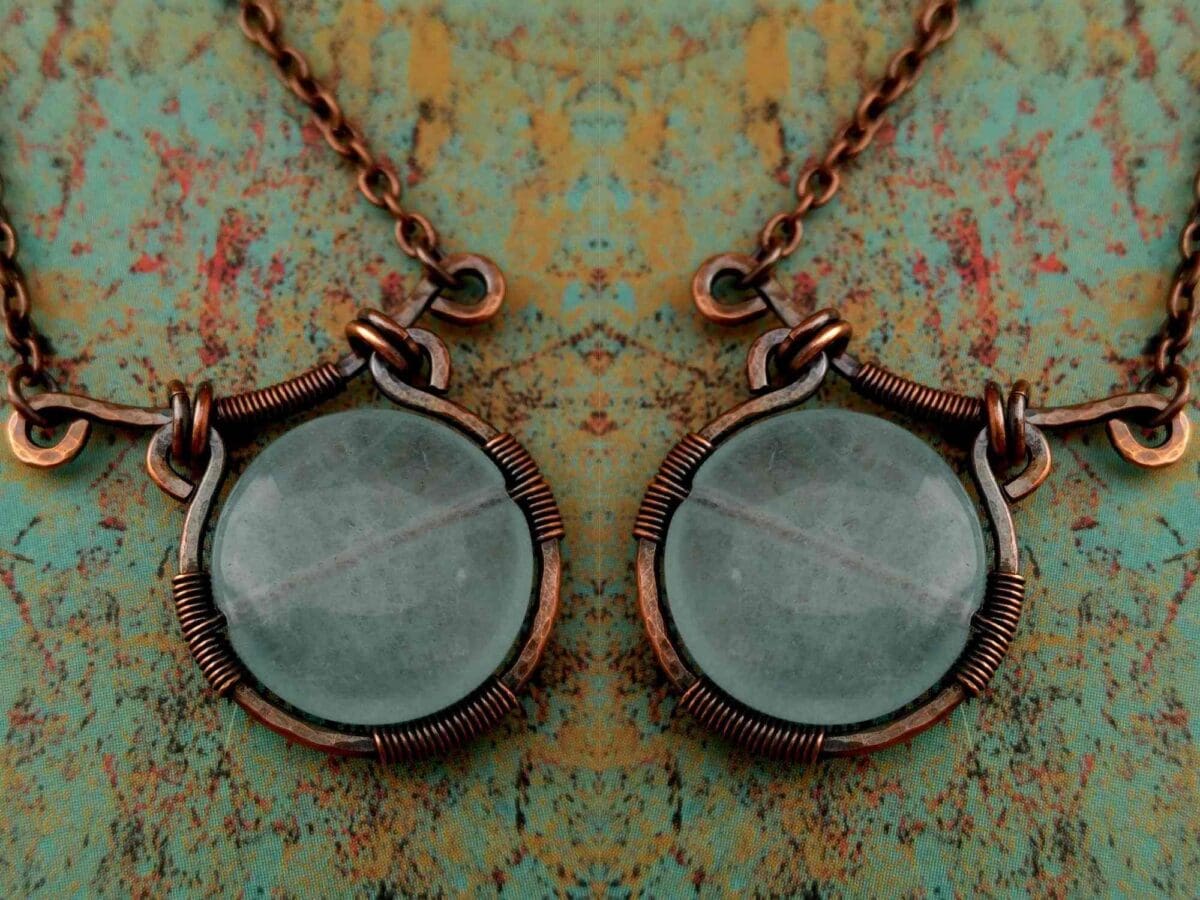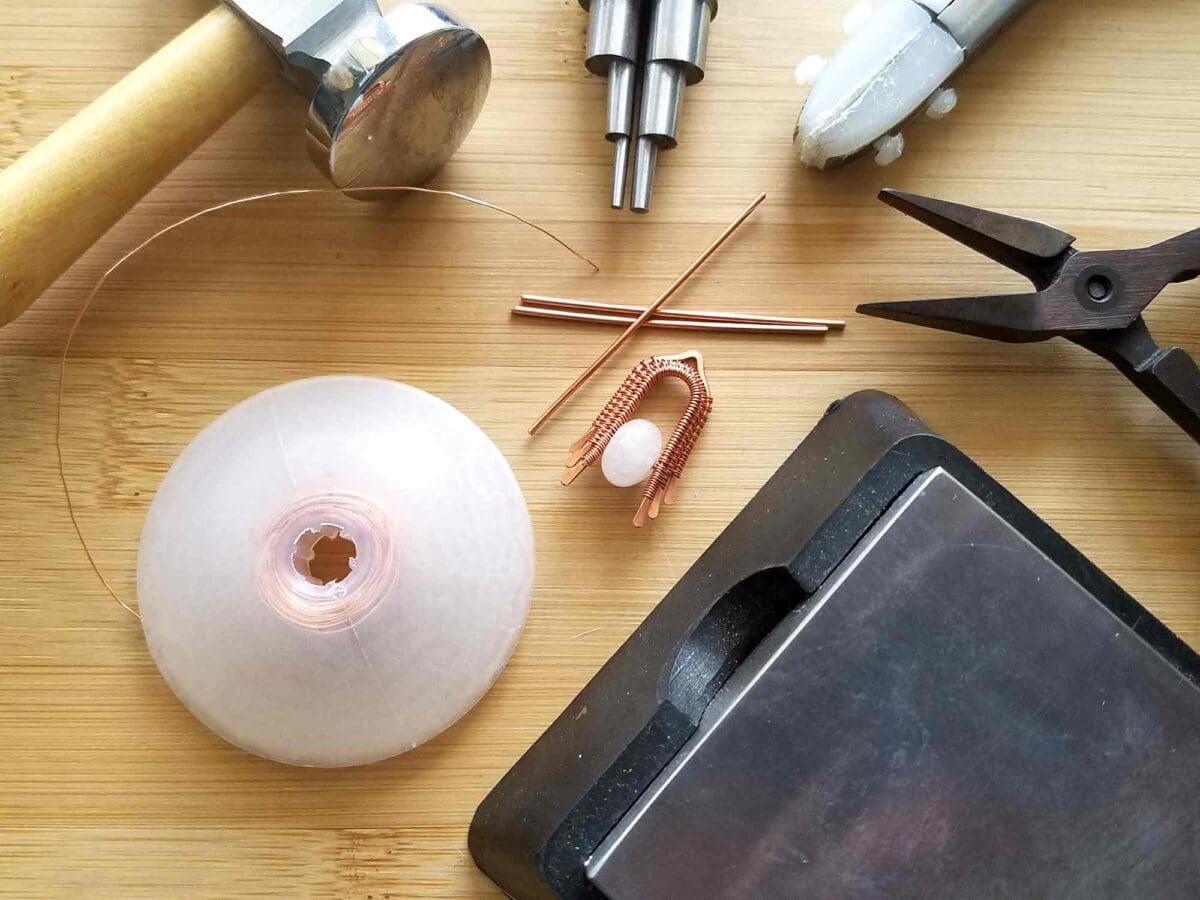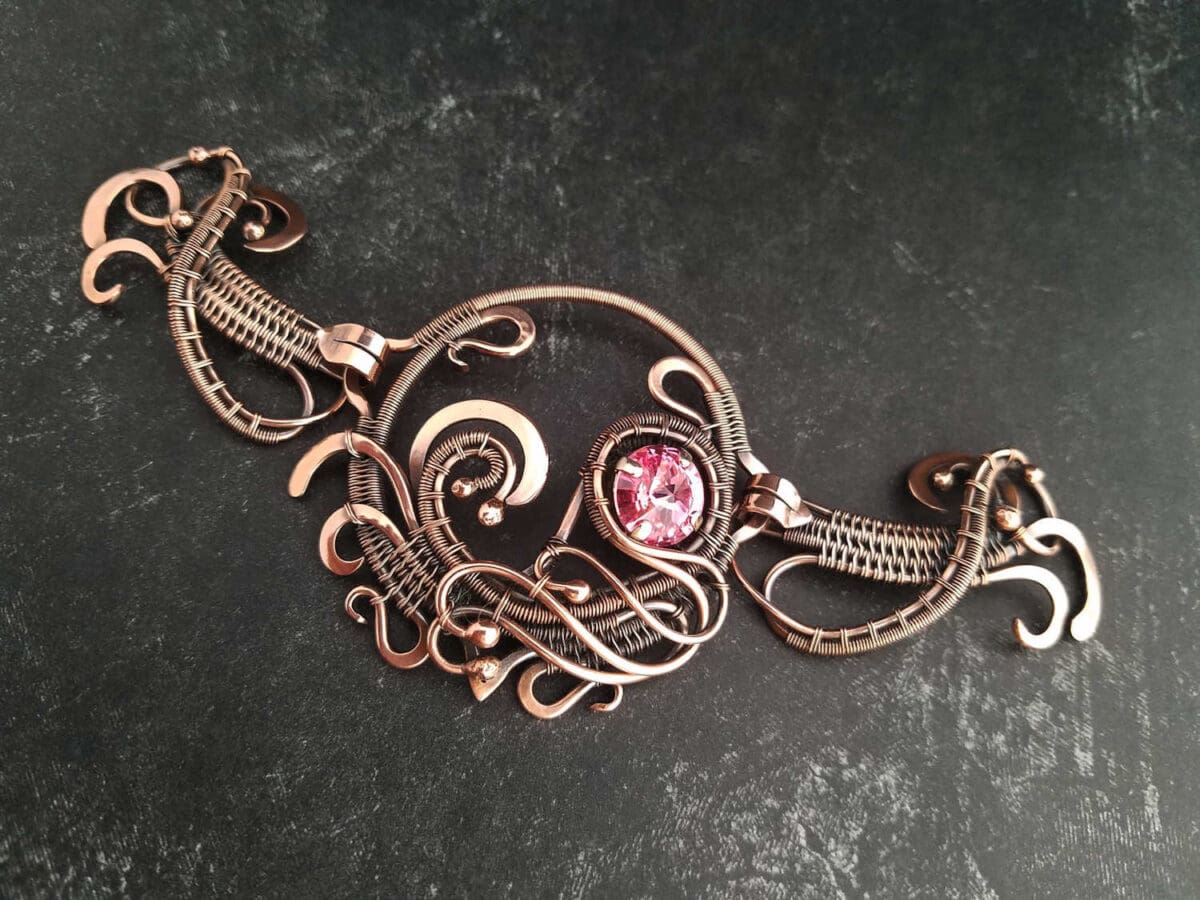5 Useful Insights for Pricing Handmade Jewelry
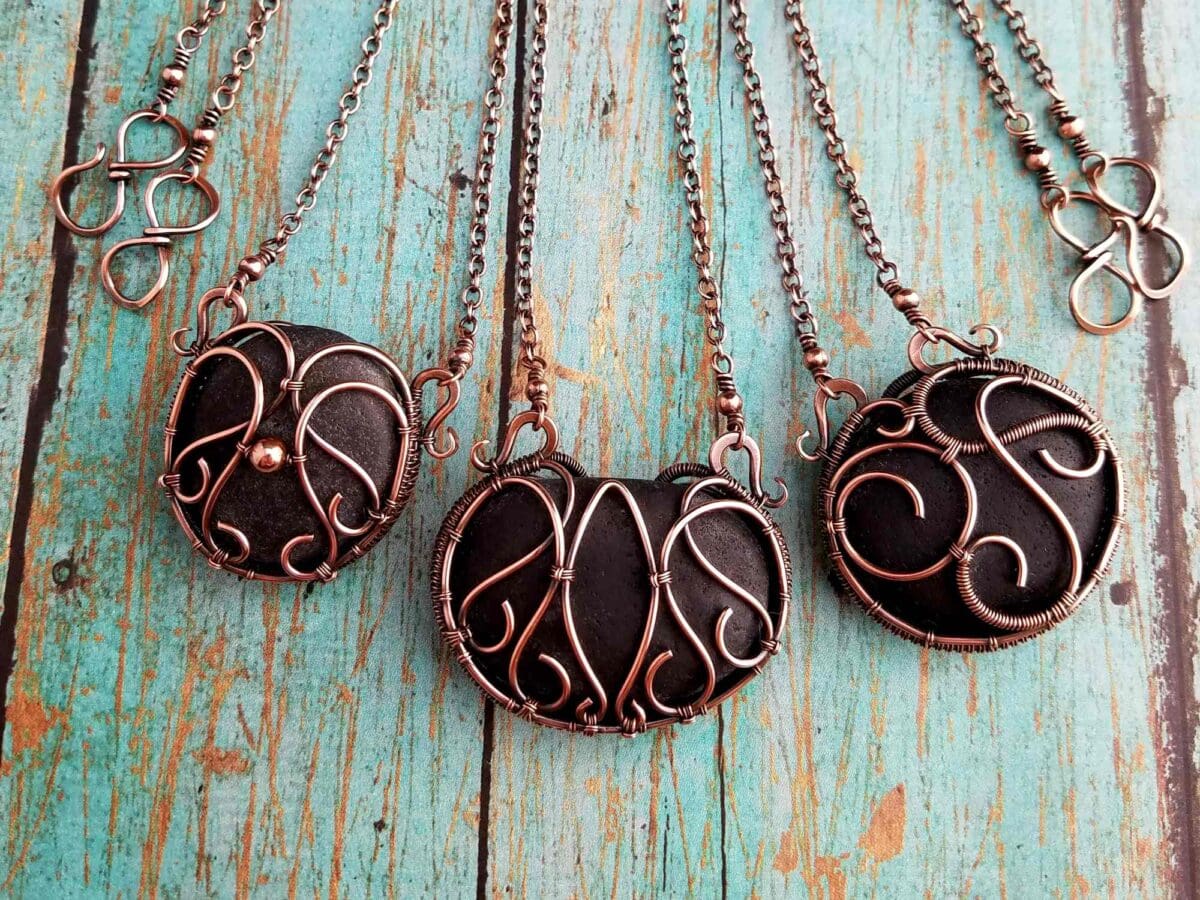
We’ve all felt it. That tidal wave of anxiety that causes us to lose our confidence when it comes to pricing our own handmade jewelry. Maybe that anxiety has even stopped you from moving your jewelry business forward. Or maybe it’s knocked you completely off track.
News flash: No one is immune to pricing anxiety. Not even the best jewelry designers in the world. Assigning a monetary value to our work is HARD. It puts us in a vulnerable position and, let’s be honest, who here is comfortable feeling vulnerable?
Not this girl. But I have learned five important insights about pricing handmade jewelry that help me manage my own pricing anxiety. I hope they’ll help you too. We’re going to dive deep into pricing anxiety because that’s ultimately what keeps us from leaning into our businesses. And, frankly, I think we all need to just get over it.
This post may contain affiliate links. If you click on a link and then make a purchase, I may earn a small commission (at no cost to you). As an Amazon Associate I earn from qualifying purchases. To learn more, please see my full disclaimer.
Without further ado, here are the five essential insights you need to grasp before pricing your handmade jewelry.
In a nutshell
5 Insights for Pricing Handmade Jewelry
- Money is a renewable resource. Your time is not.
- Your friends and family? They’re not your target customers.
- Does the quality of your work match your prices? If not, you need to improve your quality. Not lower your prices.
- If your style isn’t uniquely your own, your prices won’t be either.
- You’re getting close to the right price when you feel uncomfortable.
Let’s expand on each of these insights.
1. Time is not a renewable resource
We’ve all heard the old cliché, you have to spend money to make money. But has anyone ever told you that you have to spend time to make time? Of course not. That’s ridiculous. And yet, we’re wildly generous with our time and Scrooge-
I’ll tell you why. It’s because we’ve been duped into believing that our time is somehow less valuable than a
Say it with me:
Money is a renewable resource. Time is not.
Once time is spent, there’s no earning it back. So use it wisely and pay yourself accordingly.
2. Your friends and family aren’t your target customers
This one was really hard for me to accept. I have professional friends and relatives who command anywhere between $35 and $1,000 per hour for their services. I know horse trainers and photographers and business coaches and software developers and graphic artists who don’t bat an eye when it comes to charging what they believe their skills are worth.
For that matter, I didn’t bat an eye either when I paid for each of their services in the past. Yet, many of those same friends and relatives aren’t willing to pay full price for my jewelry. What it boils down to is that they don’t value my skills or my products the same way that I value theirs.
And you know what? That’s okay. Because they are not my target customers. This point is so important that I want you to make a mantra out of it. Repeat it, over and over again, until you’re totally at peace with it.
Seriously. Say it with me. Out loud!
My friends and relatives are NOT my target customers.
Now, that’s not to say that your friends and family aren’t valuable assets for your business because they are. I can’t count the number of customers I’ve gained because friends and relatives helped spread the word about my business.
Here’s a prime example. The three bespoke necklaces pictured above were commissioned by one of my best repeat customers. She first discovered my jewelry through my mother-in-law. This customer traveled to Iceland recently, and she brought back three volcanic beach pebbles that she asked me to wrap for her. She made no design specifications besides the chain length, and she didn’t care to discuss price. Instead, she was willing to pay whatever I asked for three one of a kind Door 44 designs. This is my target customer. Did I mention that she discovered me through my mother-in-law?
Accepting this basic truth about your friends and family will spare you a lot of heartache. Please, do not price your handmade jewelry based on what your friends and family are willing (or able) to pay for it. Instead, just be grateful for their support and they’ll happily share your work. And isn’t that ultimately worth more than just a handful of sales?
3. Does the quality of your work merit your prices?
It’s time for some introspection. Although I don’t want you to undervalue your time or underprice your work, I also don’t want you to overprice it. And striking that balance requires some seriously objective criticism.
How’s your craftsmanship? How does it compare to your peers? Have you ever walked a craft show and been horrified by another maker’s prices because their craftsmanship was so poor? Likewise, have you ever run across a maker who clearly isn’t charging enough for their exquisitely crafted goods?
This is where the rubber meets the road when it comes to pricing jewelry. You need to be brutally honest with yourself about where you’re at in terms of craftsmanship. If your weaves are sloppy and the lines of your work don’t flow well. If you’re using inappropriate materials and your wire is pocked with tool marks, you might not be ready to sell your work just yet.
Your craftsmanship needs to state clearly that you are a pro. So, this is the one and only time that I suggest you compare your work to that of other jewelry designers. But be careful. This is not about who is the better designer or who created the prettier Tree of Life pendant. This is about craftsmanship. Period. So, ask yourself…
Does my craftsmanship measure up?
If not, you have some more work to do. Practice, practice, practice. Then practice some more until your craftsmanship is as good or better than your competition.
4. If your style isn’t uniquely your own, your prices won’t be either
This might seem like strange advice coming from someone who allows (even encourages) you to make and sell the designs from her tutorials. But hear me out on this one. When you’re first starting out, you learn by copying. This is how you hone your craftsmanship and figure out your own style.
Think of my designs as training wheels. They’re proven sellers that will help you build your inventory and get your jewelry business off the ground. But we both know that they’re not your designs. They’re mine. And because I’ve made them public, there could very well be multiple wire artists selling Door 44 designs at the same events and venues.
This is where craftsmanship factors in. Wherever two artists are selling the same thing, the one with the better craftsmanship will always command the higher price. It’s also where originality comes in. The more unique and original your handmade jewelry is, the more you can charge for it.
The takeaway here is this. If you really want to thrive as a jewelry designer, you need to develop a style that’s uniquely your own. Your style is a huge part of your brand. It’s what will attract your target customers. And for those customers, price is not an issue.
So, ask yourself…
Does my jewelry reflect my own unique style?
Just as with craftsmanship, if the answer to this question is no, you have some work to do. If you’re having trouble pinpointing your own style, unplug from the constant barrage of wire jewelry images on social media for a while. And just take some time to make jewelry.
The more you immerse yourself in the process of actually making jewelry (as opposed to just looking at the jewelry that other people have made), the faster you’ll find your own secret sauce.
5. If you’re not uncomfortable with your prices, they’re too low
Here’s the God’s honest truth about money. There’s more than enough of it for all of us to prosper. Where most of us struggle is that we don’t have an abundance mindset. Instead, we approach money from
I have a whole series of posts on the money mindset planned. But in the meantime, I highly recommend the book You Are a Badass at Making Money by Jen Sincero. This is a must-have resource for your business library. Seriously. Get it now and then answer this question:
Do you want to make a full-time living from your jewelry business?
If you answered no, then you have a hobby. Not a business. And there’s nothing wrong with that as long as you understand the difference. If, on the other hand, you answered yes to that question, you’re probably pricing your handmade jewelry too low.
Oh, and you know what? There’s no right or wrong number. And for Pete’s sake, there’s no magic maker’s pricing formula out there either. Here’s how you know your prices are at least in the ballpark: they make you uncomfortable.
Don’t believe me? Try this experiment. As you begin to make some sales, start ratcheting your prices up a little at a time. Once you’re comfortable with those prices and your work is still selling, ratchet them up some more.
Rinse and repeat until you’ve replaced the income from your day job and can finally make the leap to full-time jewelry designer. Then do it some more. There’s no ceiling here. If your work isn’t selling, it’s not because of your prices. So get that tired old excuse out of your head and look elsewhere for the cause. (HINT: Revisit points 2, 3, and 4 above.)
Your prices should be just out of your comfort zone. This puts you in a growth mindset, and it keeps you striving to improve your craftsmanship and hone your unique style. More importantly, it puts the word out in the collective consciousness that you’re serious about building your jewelry business. And that will attract your target customers.
It all boils down to this
Time is your most valuable resource because it’s not renewable. If you expect to earn a full-time living from your jewelry business, you need to charge for your time as if it’s the precious resource that it actually is.
What does that really mean? It means your jewelry prices should reflect a fair value for your time. Pricing handmade jewelry isn’t about finding a perfect formula or gauging your prices by what your friends and family are willing and able to pay. Nor is it about what other jewelry makers are charging for their work.
Hone your craft. Claim your unique style. Price your work at a point that makes you feel uncomfortable (and never mind what your friends and family have to say about that). These are the things that announce to the Universe that you honor yourself and your time. That you are a professional jewelry designer. And that you are open for business.
Embrace these five insights. Practice your craft diligently. And the customers will come.
Discover More Behind Door 44
Thanks so much for joining me today. I hope you found this article useful. Pricing handmade jewelry is scary, and dealing with pricing anxiety isn’t fun. But you have both the right and the responsibility to earn a fair price for your time. How else can you build a thriving jewelry business?
Want to read more helpful posts like this one? Be sure to check out more of my Jewelry Biz Resources.
I’d love to hear your ideas and suggestions for new jewelry business blog posts. So, be sure to connect with me @door44studios on Instagram, and Facebook. And if you’re a jewelry maker, be sure to join my private Facebook Group where we talk about all things related to wire jewelry.
Until next time, go make something beautiful. And don’t forget to charge for your precious time!

Pin this Post for Later
